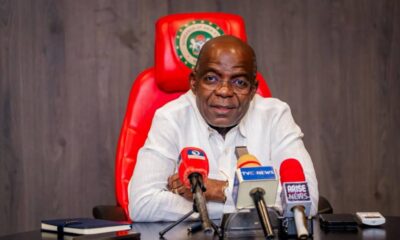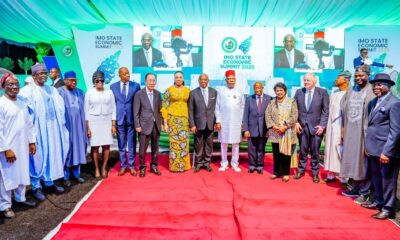Tech
NASA increases the chance of ‘city-destroying’ asteroid hitting Earth

- READ MORE: Map reveals what will happen if the ‘city-destroying’ asteroid hits
The ‘city-destroying’ asteroid hurtling toward Earth is being carefully watched by hundreds of the world’s most powerful telescopes.
Now, NASA has quietly increased the chances that this deadly space rock will smash into the planet in 2032.
The space agency predicts that the asteroid 2024 YR4 has a one-in-38, or 2.6 per cent, chance of hitting.
Those are the same odds as having your number come up on a spin of a standard American roulette wheel.
When it was discovered in December last year, NASA estimated that the chances of 2024 YR4 hitting us were one in a thousand.
However, as more data has been gathered about its orbit, the impact probability has rapidly increased.
Currently, the odds of 2024 YR4 hitting Earth on December 12, 2032, are double what they were at the end of January less than three weeks ago.
With an estimated diameter of 54 metres (177ft), or a little taller than Nelson’s Column in Trafalgar Square, that collision has the potential to cause enormous amounts of damage.

NASA has quietly increased the chances that the city-destroying asteroid 2024 YR4 could hit Earth in 2032 once again (stock image)
The asteroid was discovered on December 27 by the NASA-funded Asteroid Terrestrial-impact Last Alert System (ATLAS) telescope in Chile.
Early calculations of its orbit quickly showed that there was a slim chance of the near-Earth object (NEO) making a close pass of the planet in the next decade.
However, as astronomers made more observations and arrived at a better estimation of the asteroid’s orbit, the probability of a collision continued to rise.
On January 27, 2024 YR4 truly set alarm bells ringing when it became the only large asteroid with an impact probability greater than one per cent.
This prompted NASA to award the asteroid a score of three on the Torino Scale, a standard measure for the danger of NEOs.
This rating is extremely rare since it can only be given to an object over 20 metres (65ft) in diameter with an impact probability greater than one per cent.
The Torino scale describes this threat as: ‘A close encounter, meriting attention by astronomers. Current calculations give a 1% or greater chance of collision capable of localized destruction.’
Were the asteroid to hit Earth, NASA estimates that the explosion would be equivalent to eight megatons of TNT.
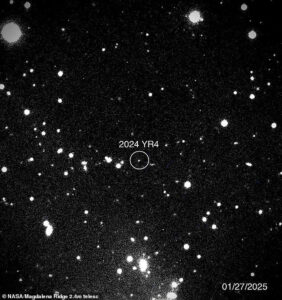
NASA now estimates that the 54 metre-wide (177ft) asteroid has a one-in-38 chance of hitting Earth. Those are the same odds as a specific number coming up on a standard American roulette wheel
That is more than 500 times the power of the atomic bomb dropped on Hiroshima during World War II.
The resulting blast would be similar to that caused by the Tunguska Asteroid, which flattened 830 square miles (2,150 square km) of Siberian forest in 1908 – an area more than double the size of New York.
Based on current estimates of the asteroid’s orbit, astronomers have calculated a ‘risk corridor’ of locations that could be hit if it were to collide with Earth.
This path stretches from northern South America, across sub-Saharan and North Africa, and into South Asia.
Worryingly, the risk corridor passes over eight of the world’s most populated cities, including Bogota in Colombia, Lagos in Nigeria, as well as Mumbai and Chennai in India.
Those cities alone have a combined population of over 110 million people, who could be in serious danger from an asteroid impact.
In the history of astronomy, only one other asteroid has ever been given a Torino Scale rating of three or higher – that being the 185-metre (600ft) 99942 Apophis.
Apophis, nicknamed the ‘God of Chaos’ asteroid, was briefly escalated to a four on the Torino Scale in late 2004 before rapidly dropping back towards zero.

The estimated ‘risk corridor’ for the asteroid’s impact (red line) passes over eight of the world’s 100 most populated cities, with a combined population of 110 million people
Astronomers around the world are currently holding out hope that 2024 YR4 will soon follow a similar pattern.
Most NEOs have a higher impact probability right after they are detected with the risk dropping off as scientists gather more data about their orbits.
At first, as lots of new data comes in, the probability tends to sharply increase creating the impression of a rapidly growing risk.
However, NASA and the European Space Agency (ESA) currently predict that this should be followed by a drop in probability once the astronomers can be more certain about the asteroid’s orbital path.
NASA spokesperson Molly Wasser wrote in a blog post: ‘As more observations of the asteroid’s orbit are obtained, its impact probability will become better known.
‘It is possible that asteroid 2024 YR4 will be ruled out as an impact hazard, as has happened with many other objects that have previously appeared on NASA’s.’
She adds: ‘It is also possible its impact probability will continue to rise.’
Both NASA and ESA will continue to make observations of the asteroid until April at which point it will become too faint to observe until it returns around June 2028.
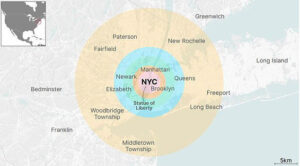
If the asteroid did hit Earth, the resulting blast could topple residential structures within a 8.5-mile radius (13.7 km) (shown as blue) and break windows everywhere within 24.6 miles (39.6km) (yellow)
In a rare emergency decision, ESA has also been granted access to the James Webb Space Telescope in March to better assess the risk posed by 2024 YR4.
The JWST will record the heat emitted by the asteroid using its infrared sensors which will give a more accurate estimate for its size.
Those measurements will be key to making a decision on whether action needs to be taken to divert the asteroid from its course.
If the decision is made to push the asteroid off its current course, the most likely option would be using a ‘kinetic impactor’ to push it aside by ramming a satellite into the asteroid as fast as possible.
In 2022, NASA’s DART mission showed that it was possible to significantly alter the trajectory of a large asteroid with a satellite collision.
However, with only eight years until the asteroid arrives, some scientists have cast doubt on the plan to deflect the killer asteroid.
In a post on X, Dr Robin George Andrews, a volcanologist and author based in London, points out that we ‘have less than eight years to potentially deal with it’.
‘You need 10 years or more to build, plan and execute an asteroid deflection mission,’ he said.
Tech
GLOBACOM SEALS STRATEGIC CONNECTIVITY PARTNERSHIP TO DRIVE IMO STATE’S DIGITAL TRANSFORMATION AGENDA

By Prince Uwalaka Chimaroke
15-NOV-2025
Globacom, one of Nigeria’s leading digital solutions providers, has entered into a groundbreaking Internet connectivity agreement with the Imo State Government through the Ministry of Digital Economy and e-Governance—an ambitious step that signals the state’s commitment to becoming a fully digitized economy and a model Smart City in the South-East.
The agreement, hailed as the largest single fixed Internet connectivity initiative ever undertaken by Globacom’s Enterprise Business Group, underscores the company’s growing influence in deploying world-class telecommunications infrastructure across Nigeria. This milestone partnership positions the operator at the heart of Imo State’s fast-evolving digital future.
Through the deal, Globacom will deliver high-capacity, state-of-the-art Internet infrastructure to strategic government and institutional locations. These include the 15-building Smart City complex in Owerri, the Ministry of Digital Economy and e-Governance, and the Imo State University for Innovation, Science and Technology (formerly Imo State Polytechnic). The infrastructure rollout is expected to strengthen digital literacy, modernize public administration, and enhance access to digital services for residents.
A central component of the project is the integration of the Glo-1 submarine cable—Globacom’s privately owned, trans-Atlantic fibre optic system that links Nigeria directly to Europe. Known for its high bandwidth, ultra-low latency, and secure connectivity, the Glo-1 network will serve as the backbone for Imo State’s digital expansion.
With this partnership, Imo State aims to accelerate e-governance, improve the efficiency of public service delivery, attract technology-driven investments, and promote innovation across sectors including education, commerce, and security.
The collaboration demonstrates a shared vision between the State Government and Globacom: to empower citizens, institutions, and businesses through robust digital infrastructure that can sustain long-term economic growth.
Tech
Toyota Unveils First Electric Pickup Truck in Thailand

Japanese automaker Toyota, the world’s top carmaker, unveiled the electric vehicle model of its pickup truck ‘Hilux’ for the first time in Bangkok, Thailand, on the 10th. A ninth-generation model undergoing a complete redesign after 10 years, it marks Toyota’s first electric pickup truck.
Toyota plans to sequentially sell the Hilux, produced at its Thai factory, in multiple Asian countries starting next year. A diesel model targeting the Japanese domestic market is also scheduled for release from the middle of next year.
Why did Toyota, which has been criticized for lagging in electric vehicles, unveil its first electric pickup truck in Thailand? Industry analysts suggest the move is part of efforts to defend its “home turf” as Chinese companies, leading with electric vehicles, have rapidly captured Southeast Asian markets. In Thailand, the largest market in Southeast Asia, Chinese firms dominate 88% of the EV market, far surpassing South Korea (1%), the U.S. (6%), and Europe (5%).
While U.S. import car tariffs have decreased from 25% to 15%, global automakers including Toyota continue to face tariff risks in the world’s largest U.S. market. Additionally, concerns over a “peak out” in the U.S. auto market persist, making the defense of third markets increasingly urgent.
In a similar context, Hyundai Motor has recently increased investments in third markets and is seeking a turnaround through new vehicle launches. Last month, Hyundai announced that Tarun Garg, the current COO, Chief Operating Officer, of its Indian subsidiary, would be appointed as the new CEO, Chief Executive Officer, starting January 1 next year. This marks the first time in 29 years since the establishment of the Indian subsidiary that a local Indian has been named CEO.
Hyundai also held its first CEO Investor Day for shareholders and institutional investors in India, pledging to invest 450 billion rupees (approximately 7.4 trillion Korean won) in the country by 2030. Last year, it had announced an investment of 320 billion rupees (approximately 5.3 trillion Korean won) by 2032, but the average annual investment has since increased by hundreds of billions of won.
Tech
OPay, UniCal to establish cybersecurity lab
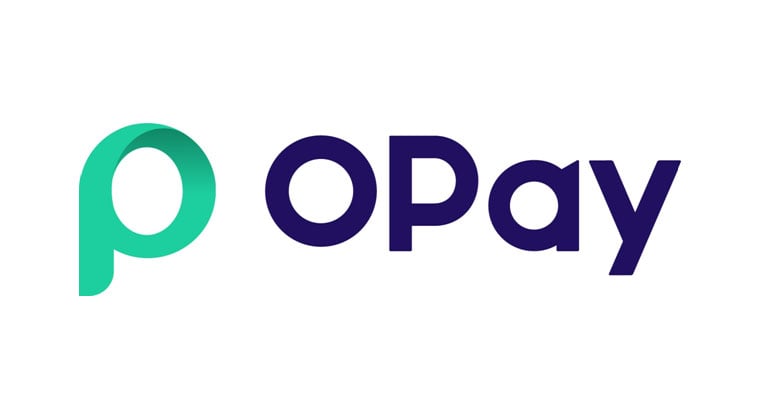
Fintech firm OPay has signed a Memorandum of Understanding with the University of Calabar for its cybersecurity lab project.
The MoU was signed at the OPay CSR Empower in Futures 2025 event held in Lagos on Friday. The event also marked the celebration of the 420 beneficiaries of OPay’s N1.2bn ten-year scholarships for Nigerian university students.
Cyber lab support is part of the company’s education CSR initiative.
Speaking on the new initiative, the Executive Director of the OPay Nigeria Board, Elizabeth Wang, explained that the company’s vision goes beyond financial technology, focusing on creating social value and investing in the nation’s future.
“At OPay, our vision is to become the most respected and popular financial technology company that actually creates social value,” she said. “That’s why last year we announced our CSR. From the very beginning, we thought about what direction we wanted to take and where we wanted to focus this year and in the following years. The answer is simple. We believe in the future. And who is the future? The student is the future. Education is the future.”
Wang, who is also the Chief Commercial Officer of OPay, disclosed that during the visit to the University of Calabar, the Vice-Chancellor requested support for the creation of a cyber lab.
“When we went to the University of Calabar, the VC reached out to say, ‘Can you support me for the cyber lab?’” Wang said. “For OPay, our mission is to make financial services more inclusive through technology. We are the ones leveraging technologies to reshape and reform financial services in Nigeria.
“We said okay, then we asked, do we have the capability to do more? Not just support for the equipment or renovation of the building, but we can cascade our knowledge and our technologies to the students so that they can have a better understanding of these technologies. And then, when they graduate, they can also contribute more with their talents and techniques to bring better technology to society.”
She added that OPay would also be sending a team of experts to the cyber lab for an annual knowledge-sharing session.
“What is more is that we will send our team at least once a year to give a lecture to students to let them know about the latest technologies, what is the latest for security, cyber and all the new things, so that the students will be equipped with the latest information and technology,” she announced.
She revealed that OPay had signed a 10-year Memorandum of Understanding with several universities and expressed gratitude to the institutions and students who had welcomed the initiative.
“We will let you know that OPay will announce the 10-year N1.2bn scholarship. We are serious, we are passionate, and we really want to deliver our commitment to society,” she stated. “In the past year’s journey, all our team flew to all the schools to sign the MoUs. We reached out to the students and worked together with professionals, managers and deans from the schools. We selected the students who are good and really need help, and we already disbursed the money to them so that they can really benefit from it.”
According to Wang, OPay has already disbursed N126m in the first year of the scholarships, supporting 420 students across 20 universities in the first year of the initiative.
The CSR Manager, OPay, Itoro Udo, also highlighted the company’s dedication to long-term social investment, noting that initiatives like the scholarship and cyber lab projects reflect OPay’s belief in technology as a bridge to opportunity and empowerment.
“At OPay, our journey has never been just about technology. It has been about using technology to build bridges and connect people and communities. Because what good is progress if it does not lead others along the way?
“We have seen young Nigerians who once faced uncertainty about their dreams now daring to dream again. We have heard their voices tremble with gratitude as they speak of a tomorrow they once thought was lost. These are not just beneficiaries; they are the future innovators, leaders, and teachers who will shape the nation we all hope to see. These are not just statistics; they are stories of hope rekindled, of families restored, of communities inspired.”
The conference also featured testimonials from scholarship beneficiaries who shared how the programme had transformed their academic and personal journeys.
One recipient, a graduate of Kwara State University, Ajoke Abdullah, expressed gratitude, saying, “The scholarship enabled me to graduate as the best graduating student of my department and also boosted my confidence. I want to thank OPay for believing in me and for supporting my education.”
Deputy Vice-Chancellor (Academics), University of Jos, Professor Rahila Plangnan, praised the company’s intervention and urged OPay to deepen its engagement with students beyond financial aid.
“I just want to appreciate OPay for ensuring that we are giving a lifeline to university students,” she said. “When the union-based universities say that there’s no funding, there’s actually no funding. One of the sections where there’s no funding is for the students. Negligible funds are coming to students.”
She called on OPay to establish a system for tracking beneficiaries to ensure long-term impact, saying, “We want you to form an alumni group with the students going forward so that you can track what you’ve been able to do as university students. It should not end when they graduate. Please track them even after their graduation.”
In her remarks, the Rector of Federal Polytechnic, Nekede, Dr Basilia Igbokwe, commended OPay for its ten-year CSR scholarship scheme, describing it as “a lifeline that has been affecting lives all over Nigeria.”
“From the time you came, the school really benefited. We ensured that the beneficiaries were truly indigent students. There have been smiles everywhere because some of our people are orphans,” Dr Igbokwe said.
She further requested employment opportunities for graduates under the programme.
“After you have given all the scholarships, it would not be good if they just come out and nothing happens. So if it’s possible, maybe some of our graduates could be absorbed, maybe two or three of them, and it will also help as part of what you are doing to ensure that your impact continues,” she added.
The Dean of Student Affairs at UniCal, Professor Patrick Egaga, in a chat with The PUNCH, highlighted the importance of the MoU with OPay and its impact.
He said, “We are the first university in the country that is running cybersecurity as a course, and now we have a cyber lab. That means the students are better enhanced. But above all, what we should note is that the establishment of a cyber lab, or the commencement of the establishment of the cyber lab, and the use of the cyber lab, will help a lot in curbing crimes of kidnapping, stealing of phones and so on. Because a kidnapper cannot kidnap without a phone — he will definitely use their phone to communicate with others. It is very easy now with the use of cybersecurity that is provided by the cyber lab to detect, determine or establish where these guys are operating from.”
-
Business1 year ago
US court acquits Air Peace boss, slams Mayfield $4000 fine
-

 Trending1 year ago
Trending1 year agoNYA demands release of ‘abducted’ Imo chairman, preaches good governance
-

 Politics1 year ago
Politics1 year agoMexico’s new president causes concern just weeks before the US elections
-

 Politics1 year ago
Politics1 year agoPutin invites 20 world leaders
-
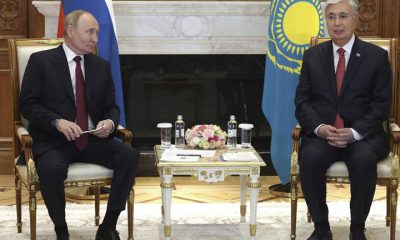
 Politics1 year ago
Politics1 year agoRussia bans imports of agro-products from Kazakhstan after refusal to join BRICS
-
Entertainment1 year ago
Bobrisky falls ill in police custody, rushed to hospital
-
Entertainment1 year ago
Bobrisky transferred from Immigration to FCID, spends night behind bars
-
Education1 year ago
GOVERNOR FUBARA APPOINTS COUNCIL MEMBERS FOR KEN SARO-WIWA POLYTECHNIC BORI







